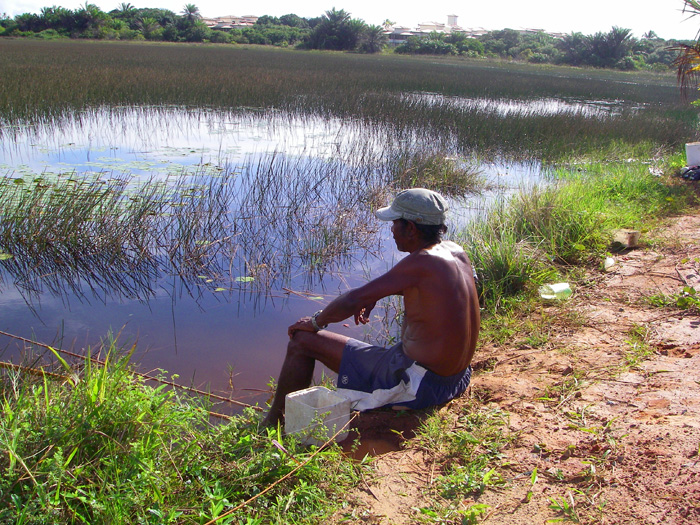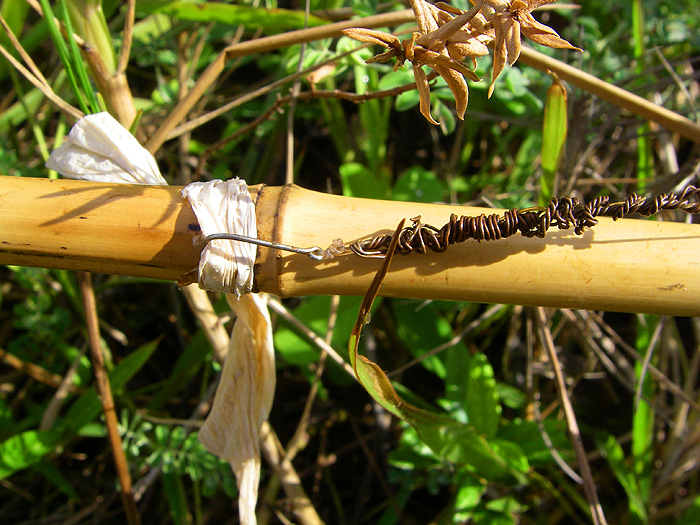 '
'Information Page.
Boulders, Baitfish, Birds and Bobs!
"When you go on fishing holidays abroad how do you get started?" I commonly get questions of this type from anglers who are about to embark on a trip to some tropical paradise. Well of course it depends a bit on where you are going to and I haven't been to enough places to give anything more than a general answer but, as a rule, the answers are fairly simple. The best thing to do is to say a bit about my own approach. I'll assume that you've managed to cram a rod, a reel, assorted lures, hooks and a few floats (corks) and bits of lead in the suitcase and that the problem lies at the point where you approach the sea on your first morning's recce.
Of course before you left home you had a careful look at Google Earth for the place you are going to and worked out as much about access and prevailing winds as you could. Also you'll have gleaned what information you can from friends, books, magazines and the internet. all this could be useful but nothing will prepare you for what you find when you arrive and from that point you'll have to play it by ear. Anyway, it's your first morning and you're standing on the beach as it get light, spinning (or fly or bait) rod in hand, looking at the sea. You were jet lagged anyway so getting out of bed wasn't a problem. The first thing to look for is features - even on miles of clean sand you will find places where the waves break closer in (the water will be deeper there), where streams or rivers flow in or where 'rips' disturb and colour the water. If you are lucky there may be reefs, rocks, jetties, weed beds or other structures. Never ignore features of any kind - the fish certainly won't.
You wander along to the end of the beach where there is a low cliff and a few boulders. What's that dark patch? Is it just the shadow of a cloud? Does it stay the same or does it change shape? If it does it could be a shoal of baitfish - fantastic! Are there any birds about? Gulls standing on the shore or floating in little convoys on the water. Terns flapping along the shallows and periodically plunging in to catch small fish. Pelicans plummeting in and bobbing up with a pouch full of water and fry. Noddys fluttering just above the surface and picking up tiny creatures in their beaks. Boobies quartering the bay and diving after bigger fish. Frigate birds soaring above the sea with their keen eyes searching for the movements of shoals of bait under attack from below. All of these suggest that there may be predatory fish in the offing.
If the water's murky and weedy keep your eyes peeled for swirls or tails that might give away the presence of bonefish or snook. If you are really lucky you may see the best clue of all - a blitz. Fifty metres out there is a splash, then another - could it be small tarpon, snapper or barracuda feeding? Suddenly the water surface is a sheet of foam as jacks tear into a helpless shoal of sardines or similar silver fish. No time to fiddle about finding the right lure, just get whatever's on the end of the line out there as quickly as possible.
Of course the odds are that you will see none of the above, indeed there may be nothing of real interest but, looking along the strand you notice a bloke with a fishing rod, go along and watch him. Take note, he could be 'Bob'. Let me explain. Bob is the bloke who's been fishing on that beach since he was a lad. He knows everything there is to know about catching the fish in that place. How will you recognise him? Well he will be there at the crack of dawn before anyone else is on the shore. His gear may be old and tatty but it will be well organised, there may even be little modifications to the tackle suggesting that he's given some thought to how he fishes. I've met lots of Bobs in my time and believe me they're invaluable. Some are taciturn or even secretive and you'll simply have to watch from a distance and glean what you can. Others may be helpful and talkative once they realise that you are a serious angler. If you don't speak the same language a few pictures or even rough sketches of fish can help to explain what you might like to catch and find out if it is likely to be present.
I'll finish with an example from my recent trip to Brazil. As I've said elsewhere the sea fishing was poor and in this case 'Bob' (or Bobzinho as Richard and I called him) was actually called Geraldo but what's in a name. I'd noticed 'Bob' sitting on the bank of the lagoon near our house. His gear consisted of a couple of canes with fixed nylon lines, little hooks and small cylinders of polystyrene for floats. He also had a monofilament handline armed with a slightly bigger hook. At the time I was spinning with a Rapala - just to see if I could get a bite from anything. I did and it turned out that I'd caught a trahira. My first move (always a good one) was to offer my catch to 'Bob'. He graciously accepted my offer with a smile and turned back to his fishing. Later I caught another trahira which was also handed to my new pal. By gestures I asked him how big the fish in the lagoon were and he held out his hands to show that they could be substantial (we later found that he'd caught them up to six kilos). I said "tucunare", my version of the Portuguese for Peacock Bass, and he nodded before reaching down and lifting out a stringer decorated with half-a-dozen tucunare that he'd caught earlier. After a while without further incident I decided that my time might be more usefully employed by observing Bob fish, so I sat on the bank a few yards away from him, put down my rod and watched.
He baited each of his float-canes with tiny shrimps, that he'd caught in a tiny drop net, and flicked them out before laying the canes down on the water. Almost at once a float went under and he was into a small pacu which was killed and laid on the bank - presumably for his evening meal. Close inspection of his gear showed that several centimetres of nylon next to the hook were closely wound with wire - presumably for protection aginst toothy fish. The next lesson was on bait catching. Three plastic bottles had been modified as 'tetra traps' with holes or slots cut into the side (see Freshwater page 209). 'Bob' scraped a scrap of orange coloured root with his knife and used the scrapings to bait each trap before it was filled with water and placed, neck uppermost and holding just enough air to prevent it from sinking, in the marginal grass. Within minutes he had three bottles full of livebaits. A brightly coloured two inch long tetra was liphooked on 'Bob's' handline and swung out into a gap. Almost instantaneously the line tightened and, with a broad grin, he hauled in a peacock bass. Magic!
So - there you have it. Take your gear and look for the signs of where to fish - features, feeding birds, baitfish shoals, striking fish and last but not least Bob, rest assured he'll be about somewhere.
If you have any comments or questions about fish, methods, tactics or 'what have you.'get in touch with me by sending an E-MAIL to - docladle@hotmail.com
Bobzinho.
 '
'Pacu gear.
 '
'